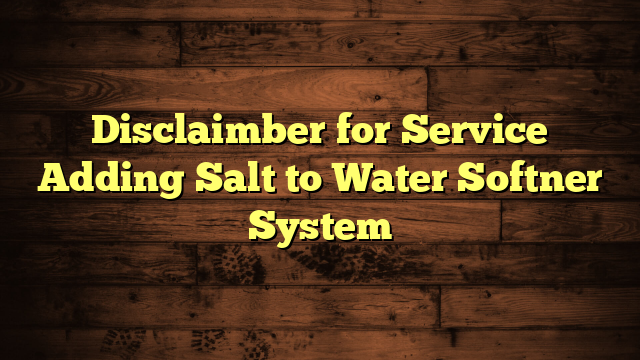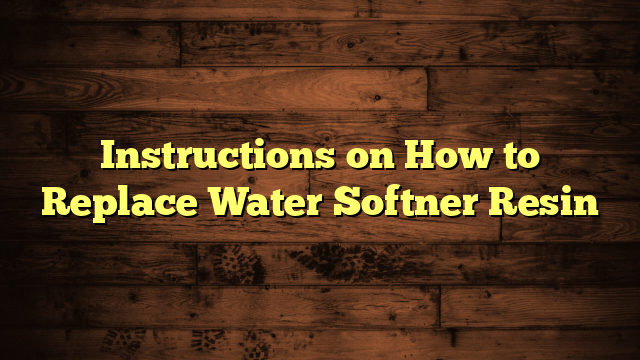Troubleshooting Your Whirlpool Water Softener: Common Issues and Solutions
If you're experiencing issues with your Whirlpool water softener, you're not alone. Many homeowners face problems like regeneration failures, salty water, or low water pressure, all of which can disrupt your daily routine. You might want to start by checking the control settings and salt levels, but that's just the beginning. Understanding error codes like "E1" and "E2" can provide clarity on specific malfunctions, but what about those stubborn resin bed problems? Keep exploring these common issues and discover effective solutions that could restore your system's efficiency.
Key Takeaways
- Verify control settings and ensure proper regeneration schedules to address issues like non-regeneration or low water pressure.
- Check the brine tank for salt levels and functionality of the float assembly to prevent salty water production.
- Familiarize yourself with error codes such as "E1," "E2," and "E3" for quick troubleshooting of water supply and control board issues.
- Inspect plumbing for clogs, leaks, or debris that could contribute to low water pressure problems.
- Perform regular maintenance by checking salt levels and cleaning the resin tank to enhance the water softener's efficiency and longevity.
Water Softener Not Regenerating
Experiencing a water softener that's not regenerating can be frustrating, especially when you rely on it for soft, clean water.
When your Whirlpool water softener skips the regeneration cycle, the result is hard water that can affect everything from your appliances to your skin.
First, check your control settings. Confirm the softener is set to regenerate as needed, which often depends on your water usage and the hardness level.
If the settings seem correct, look for a stuck timer or a malfunctioning control board.
Sometimes, a power outage can reset the control settings, causing the unit to miss its scheduled regeneration. In this case, reprogram the settings and see if that resolves the issue.
You might also want to examine the salt level in the brine tank; too little salt can prevent proper regeneration.
If everything appears in order and your softener still won't regenerate, it's wise to consult the user manual for troubleshooting steps specific to your model.
Regular maintenance and a quick check-up can extend your water softener's lifespan and confirm you're always enjoying the benefits of soft water.
Producing Salty Water
A Whirlpool water softener producing salty water can be a sign of several underlying issues. First, check if the brine tank is overfilled. If it's too full, it can cause excess salt to mix with the water, leading to salty taste issues.
Make sure the float assembly in the brine tank is functioning properly; a stuck float can prevent the tank from emptying fully after regeneration.
Next, consider the type of salt you're using. Some salts contain impurities that can affect the softness of your water and contribute to a salty taste. Switching to a high-purity salt can help resolve this issue.
Additionally, if your water softener isn't regenerating properly, it mightn't be flushing out the salt effectively. Regular maintenance and cleaning of the resin beads are essential, as dirty beads can also lead to salty water.
Lastly, inspect the control settings. If the salt dosage is set too high, that could result in salty water as well.
Error Codes and Meanings
Understanding the error codes displayed on your Whirlpool water softener can help you quickly identify and resolve issues. When you're faced with a flashing error code, don't panic—error code troubleshooting is straightforward once you know what the codes mean.
Common error meanings include codes like "E1," which often indicates a problem with the water supply. If you see this code, check your inlet valve or the water line for clogs.
Another frequent code is "E2," which may signal an issue with the brine tank. You might need to inspect the float assembly to guarantee it's functioning properly.
If you encounter an "E3" code, it generally points to a malfunction in the control board. In this case, a reset might solve the problem, or you may need professional assistance.
Each code serves as a guide, helping you troubleshoot effectively.
Low Water Pressure Issues
Low water pressure can greatly impact your Whirlpool water softener's performance, leading to inefficient softening and potential damage. If you notice that your water pressure is lower than usual, it's crucial to investigate the cause. Often, plumbing issues like clogged pipes or sediment buildup can restrict water flow, affecting the softener's ability to function properly.
Start by checking the main water supply line for any visible leaks or kinks. If everything looks fine there, inspect the inlet valve on your water softener. Sometimes, debris can obstruct the valve, reducing water pressure. Cleaning or replacing the valve may solve the problem.
You should also consider the condition of your home's plumbing. Older pipes may corrode, leading to reduced pressure. If you suspect this, consulting a professional plumber can be beneficial. They can perform a thorough assessment and recommend necessary repairs.
Finally, verify that your softener is correctly sized for your household's water usage. An undersized unit may struggle to keep up, causing perceived low pressure. By addressing these potential plumbing issues, you can restore adequate water pressure and enhance your water softener's efficiency.
Resin Bed Problems
Water pressure issues can sometimes mask underlying problems with the resin bed in your Whirlpool water softener. If you notice that your water is still hard or has a strange taste, it's vital to check the resin bed for potential issues.
Two common problems are resin discoloration and resin fouling.
Resin discoloration usually indicates that the resin beads are saturated with impurities, affecting their ability to soften water. On the other hand, resin fouling occurs when contaminants clog the resin, reducing its efficiency.
Here are some signs to watch for:
- Noticeable hard water signs, like scale buildup
- Changes in water taste or odor
- Discoloration of the resin beads
- Lower water pressure than usual
If you encounter these issues, it's important to address them promptly. Regular inspections and proper maintenance can keep your resin bed functioning at its best.
When you take action against resin problems, you guarantee your water softener continues to deliver soft, clean water for your home.
If you're unsure how to proceed, consulting the user manual or a professional can provide the guidance you need to resolve these issues effectively.
Maintenance Tips for Longevity
To keep your Whirlpool water softener running smoothly, you need to check the salt levels regularly and clean the resin tank.
Neglecting these tasks can lead to efficiency issues and even costly repairs.
Regular Salt Level Checks
Maintaining the right salt level in your Whirlpool water softener is essential for peak performance and longevity. Regular checks help guarantee that your system operates efficiently, preventing issues like hard water buildup.
You can use various detection methods to monitor the salt level effectively, and it's a simple task that pays off in the long run.
Here are some tips to keep in mind:
- Check Monthly: Make it a habit to inspect the salt level at least once a month.
- Look for Visual Indicators: If you can see salt crystals or the water level, it's a sign to refill.
- Use a Salt Measuring Tool: Consider using a stick or measuring tool to gauge depth easily.
- Refill as Needed: Keep the salt tank at least half full to avoid running out unexpectedly.
Clean Resin Tank
Keeping your resin tank clean is essential for your Whirlpool water softener's efficiency and lifespan. Regular tank maintenance, including resin cleaning, helps prevent clogs and guarantees that your system operates smoothly.
Over time, minerals can accumulate in the resin, reducing its effectiveness. To keep your water softener performing at its best, you should clean the resin tank periodically.
Start by turning off the water softener and disconnecting it from the power source. Next, drain the tank and remove any remaining salt or brine.
Using a soft brush or cloth, gently scrub the interior surfaces to eliminate any buildup. Rinse thoroughly with fresh water to remove any residues.
After cleaning, refill the tank with fresh resin and confirm it's properly seated.
Frequently Asked Questions
How Often Should I Check My Water Softener Settings?
You should check your water softener settings at least once a month, adjusting based on water quality. Keeping a consistent maintenance schedule helps guarantee peak performance and extends the life of your unit.
Can I Use Any Type of Salt for My Softener?
You can't just use any salt type for your softener; it affects softener efficiency. Stick to sodium chloride or potassium chloride to guarantee peak performance and longevity of your water softening system.
How Long Should a Water Softener Last?
Like a faithful companion, your water softener lifespan can reach 10-15 years with proper care. Regular maintenance tips, like checking salt levels and cleaning filters, guarantee it stays by your side for years to come.
What Should I Do if My Water Smells Bad?
If your water smells bad, investigate potential bad odor causes like bacteria or sulfur. You can try odor removal tips such as flushing your system, using activated carbon filters, or adding a chlorine solution to eliminate the smell.
Is It Normal for My Water Softener to Make Noise?
It's unsettling to hear noises from your water softener, but it's often normal. Different noise types can indicate various issues. Don't worry—exploring sound solutions can help you quiet those concerns and guarantee smooth operation.
Conclusion
To sum up, addressing issues with your Whirlpool water softener doesn't have to feel overwhelming. By keeping an eye on regeneration cycles, salt levels, and those pesky error codes, you can gently guide your system back to peak performance. Regular maintenance is like a soothing balm, ensuring longevity and efficiency. Remember, a little proactive care today can spare you from bigger headaches tomorrow. So, roll up your sleeves, and give your water softener the attention it deserves!







